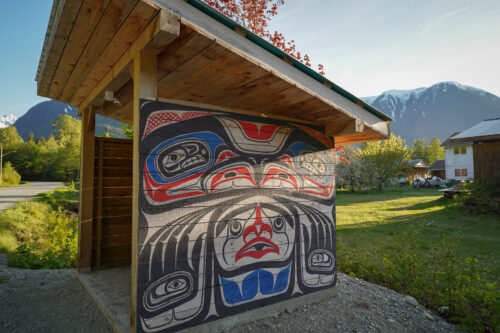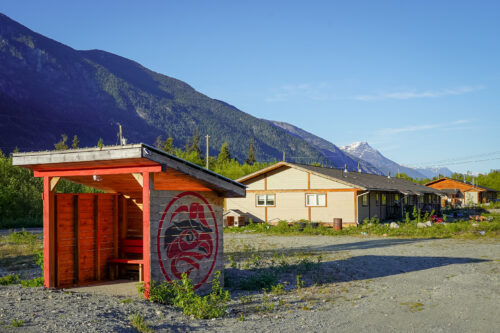In honour of National Indigenous Peoples Day on June 21st, we’re excited to spotlight the work of Ecotrust Canada—a national non-profit that has supported place-based, community-driven economies in rural, remote, and Indigenous communities for over 30 years.
This special feature offers a first look at their upcoming Indigenous Housing Landscape report, which explores Indigenous-led approaches to housing that centre community, culture, and connection to land. As we prepare to release the full report, we’re pleased to offer this early look at some of the insights and stories it holds.
About Ecotrust Canada and the Indigenous Homelands Program
As part of this spotlight, we spoke with Ashli Akins, Program Director, and Carrigan Tallio, Program Manager, from the Indigenous Homelands team at Ecotrust Canada.
“The Indigenous Homelands program focuses on helping communities return to and thrive on their homelands,” says Akins.
Ashli, Carrigan, and the rest of their team work to break down the legal, economic and systemic barriers that prevent Indigenous communities from living on their ancestral land. Their work is grounded in four pillars: decolonial governance, land stewardship, circular economies, and holistic housing.
Ashli and Carrigan recently co-led a research initiative to map the Indigenous housing ecosystem across the country – identifying key actors, gaps, and opportunities to build stronger, community-led systems. “The McConnell Foundation asked us to look at the current landscape of the Indigenous housing sector across Canada – Who are the actors? What are the gaps? What does a community-led housing ecosystem actually look like?” explains Akins.
Housing beyond infrastructure

Bus shelters with designs by local artists can be found throughout the Nuxalk Nation community, on the Central Coast of B.C., in the Bella Coola Valley. (Shannon Lough/Ecotrust Canada)
For both Akins and Tallio, a key insight from their research is that housing needs to be understood holistically—especially in rural and remote Indigenous communities—where it is deeply intertwined with healing.
“Many funding cycles that we’re stuck in only allow for short-term builds that quantify impact by speed and size rather than wellbeing — how many units can you put up? But they don’t consider the services and cultural infrastructure that make a house a home,” says Akins.
“If housing is just shelter, it’s not enough. It has to be a foundation for growth, healing, and community,” adds Tallio.
Both describe housing as a foundation for well-being—not only for individuals, but for the spiritual, mental, and physical health of families and communities across generations.
Indigenous-Led Approaches to Housing and Healing
When asked what self-determination in Indigenous housing looks like, Tallio points to the Nuxalk concept of stl’mstaliwa – meaning “the full human experience.” “The experience looks different for each of us,” she says.
“We need homes that support our way of life – fishing, hunting, gardening, gathering. Beyond that, we need flexibility and funding options without strings attached.”
Akins agrees, adding that “Some Nations are ready to lead their housing systems entirely, while others – often those in rural and remote communities – need more support at this time, as they are over-worked and under capacity.”
“Support needs to come with the trust that each community knows best about how to fund projects on their own territories.”
Moving from silos to shared responsibility
“We spoke with so many people doing great work in one region – work that could easily be adapted or shared elsewhere. But there’s no system to enable that kind of knowledge sharing. If we could bring all the key players together, we could really start chipping away at the problem” says Carrigan.
A call for Collaboration

A neighbourhood in Nuxalk Nation, on the Central Coast of B.C., in the Bella Coola Valley. (Credit: Shannon Lough/Ecotrust Canada)
The goal of this report, Akins emphasizes, is not to present a final answer – but to offer a starting point. “This is a project that is meant to be built on, added to, and used by others. We want it to spark conversations and start collaboration.”
Tallio echoes this, saying that “This report is a crucial piece to get the conversation started. It shows where Indigenous communities are not being served and where we need to build capacity.”
This spotlight offers just a preview of the forthcoming Indigenous Housing Landscape report. We’re excited to share the full report soon and to continue building relationships and learning together as this work evolves.
